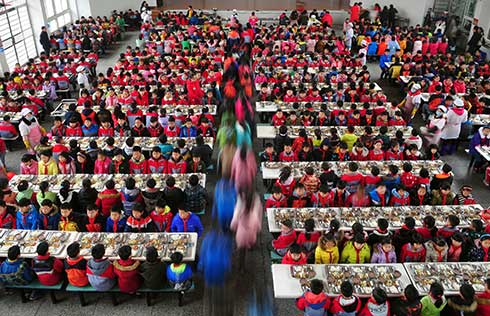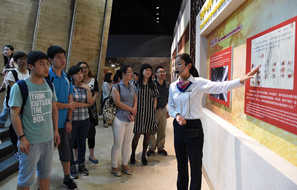Xi outlines vision of deepening reform
 |
| Xiaogang village founded an argiculture and forestry industrial park in 2014, and has been training local farmers.Wang Qiang / For China Daily |
The reform, proposed at the end of 2015 to resolve structural imbalances in the economy, has been focused on five tasks: cutting industrial capacity; reducing the housing inventory; lowering leverage; cutting corporate costs; and improving weak economic links.
Efforts in these areas paid off last year. China met the annual target of reducing overcapacity of 45 million metric tons of steel and 250 million metric tons of coal production ahead of schedule, and a large number of zombie enterprises were shut down.
To advance supply-side structural reform, China has to handle the relationships between government and market, between short term and long term, between addition and subtraction, and between supply and demand, Xi said in January, during a group study held by the Political Bureau of the CPC Central Committee.
As local legislative and political advisory bodies in 31 provinces, municipalities and autonomous regions convened their annual meetings early this year, supply-side structural reform was again brought up to the top of local governments' policy agendas.
China's supervisory system is another area of political reform that has far-reaching importance. In January last year, Xi stressed that the country must upgrade the structure of its supervisory organizations and establish a national supervisory system that will oversee all State organs and civil servants.
Last month, the leaderships of new supervisory commissions in three localities - Beijing and the provinces of Shanxi and Zhejiang - were all elected by local legislatures, which is a huge step in the right direction to curbing corruption and underhand behavior.
Military overhauled
In addition, the military structure has been overhauled. A tiered command system, including the Central Military Commission and five theater commands, replaced the original seven military area commands.
Zhu Lijia, a professor with the Chinese Academy of Governance, said the country had made remarkable progress, and the experience of the last few years will be invaluable over the next three to five years.
"The results were delivered thanks to a combination of top-level design and down-to-earth work," said Xin, from the Party School of the CPC Central Committee.
Zheng Yongnian, professor and director of the East Asian institute at National University of Singapore, agreed.
Noting that China has managed to become the world's second largest economy through decades of reform, Zheng said China's reform drive has been highly consistent in its design and implementation from the beginning.
"Unlike Western countries where political parties work to hold each other back, thus stifling key reforms, reform in China is rolled out in a highly consistent manner with a special focus put on its implementation," he said.
"The world can learn from China's reform experiences, particularly those after the CPC's 18th National Congress," he added.




















